Terry Wogan once shared with me his philosophy on holidays: he would only stay in a place that was grander than his own home. As I settled in to the Maureen O’Hara suite at the Shelbourne Hotel overlooking St Stephen’s Green in Dublin, I like to think he would have approved. Heck, I think Maureen would have endorsed the sentiment. (In our, ahem, sitting room, there are two framed letters on Shelbourne-headed notepaper to the actor in Bel Air signed Seán Aloysius Feeney, also known as John Ford.)
I am sharing with my son – given my snoring, The Quiet Man stills seem deeply ironic – while my daughters’ room overlooks the northeastern corner of the Green with its handsome Edward Delaney sculpture of Wolfe Tone. The views are magnificent but the trees must have grown since British troops fired on rebels during the Rising. No hard feelings, though, as the Irish Free State’s Constitution was drawn up in Room 112 six years later.
Elizabeth Bowen published The Shelbourne, a history of the hotel, “Tall as a cliff, but more genial”, in 1951, and William Makepeace Thackeray stayed here in 1842, but the residents’ bar celebrates Samuel Beckett, Brendan Behan and Oscar Wilde – “Everything in moderation, including moderation” – alongside eye-catching murals by Paul Slater.
My eldest had been treated to afternoon tea here for her 10th birthday, so she was an old hand, pacing herself on the sandwiches (smoked salmon, egg mayo, tomato and feta, chicken and avocado) to save room to savour the delicious scones and desserts.
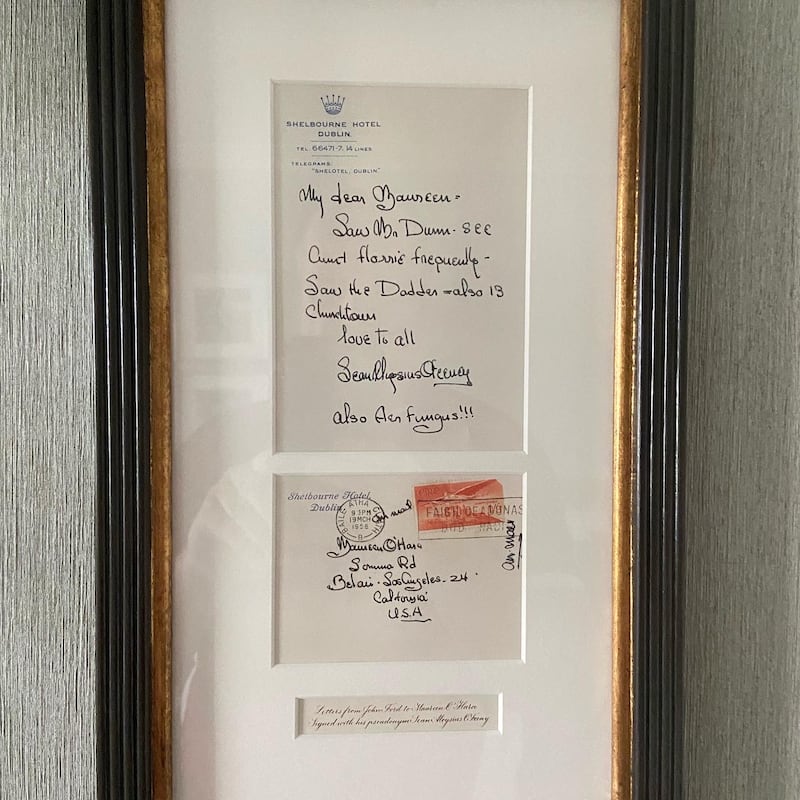
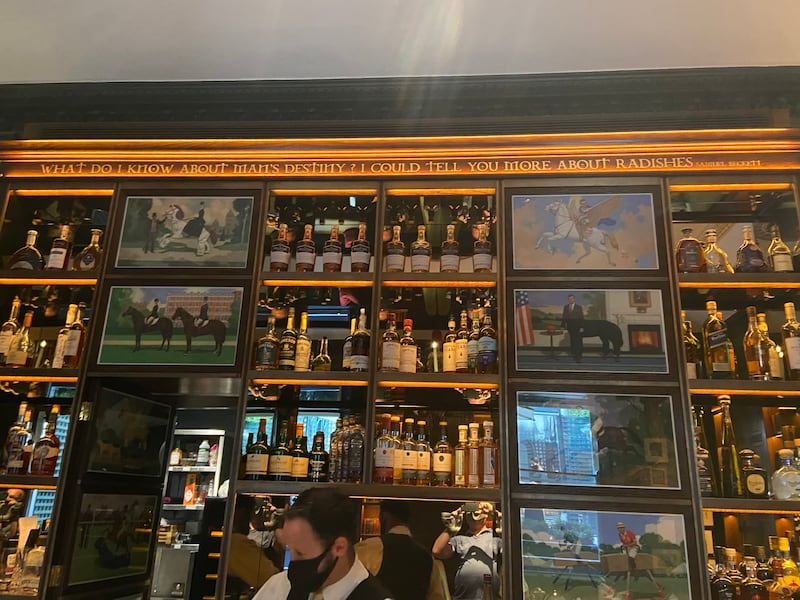
We can’t watch the Lions match in the Horseshoe Bar – not a sports bar, despite the name – but our room has Sky Sports on tap. We sporty types enjoy the sauna, steam room, and swim in the 18-metre pool – that is a triathlon, right? – but skip the gym. There is a spa, but in the interests of research I stroll 20 minutes or so to the Marker for a five-element aroma massage, which manages to untie some of the knots in my shoulders after 17 months’ working from home.
The Shelbourne is a pretty high-end base from which to explore and rediscover Dublin together for the first time since lockdown last year and the city feels . . . a bit different, but in a good way. It is 8.30pm and we are dining in the street in shorts and short-sleeved tops with no need for a patio heater, firepit or comfort blanket. This is change we could get used to.
We are literally in what used to be the road, as Merrion Row has been reconfigured to accommodate outdoor dining. As Hugo’s owner Gina Murphy explains, there is a strong Mayo connection on the street – she is from Ballina as is Bang’s owner Joe Barrett, whose nephew Simon runs Etto -– which has helped a meitheal approach, neighbouring businesses collaborating to share outside space according to need; co-ordinating with matching furniture and planters; even watering plants of businesses that are still closed. The next step is winterisation (a canopy, with heating and lighting, to cover the street) and then pedestrianisation. It’s a model other streets could follow.
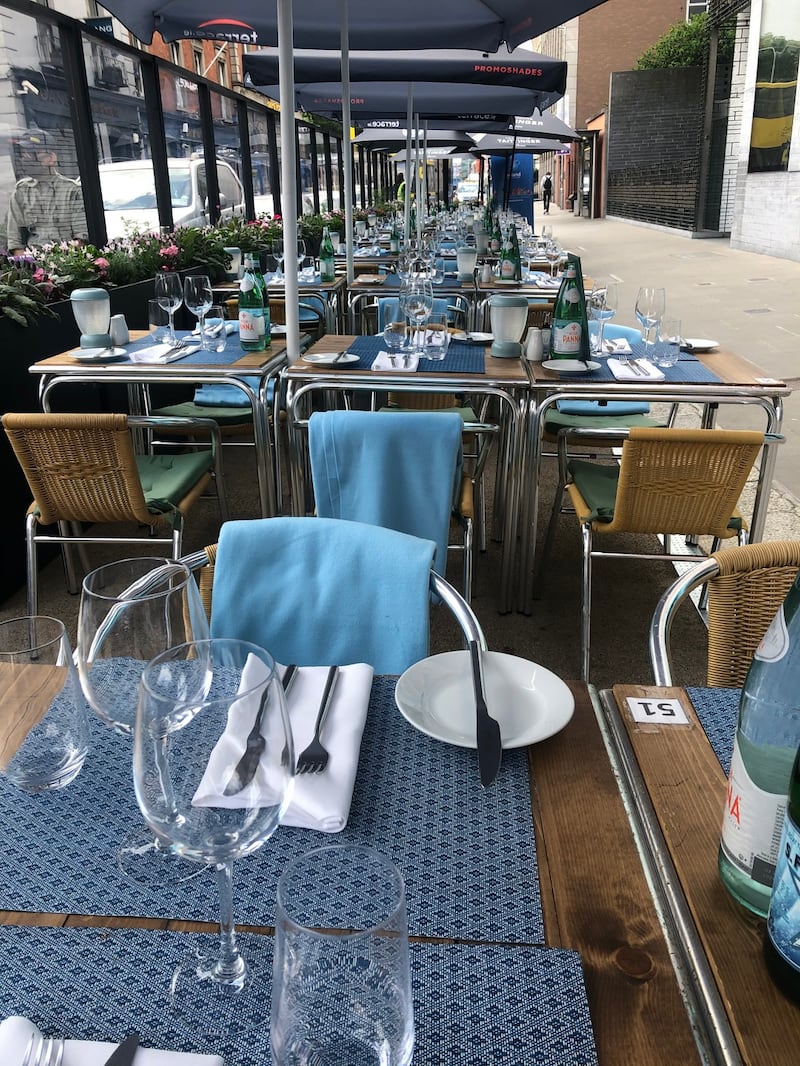
The street is jammers with diners, only the occasional passing Dublin bus reminding us that we’re not in Cannes any more. But so does the menu – gin-cured Kilmore Quay salmon with Castletownbere crab, followed by Hereford prime ribeye of beef with bourguignon garnish, skinny fries, then Wexford strawberries, set custard, honeycomb and lemon sponge – a reminder that while our climate may still be all too unpredictable, our cuisine is now reliably on a par with the continent.
The sentiment is reinforced on our second night, when we dine at Fire, next door to the Mansion House, set well back from Dawson Street but the Luas passing every so often doesn’t so much break as enhance the spell. We are in our element. The food here is superb – oysters, spiced lamb skewers, wood-fired tiger prawns to start; followed by seared scallops, prime ribeye or pan-roast chicken breast – and the illuminated fountain and the logo projected on to a neighbouring gable create a blissful buzz.
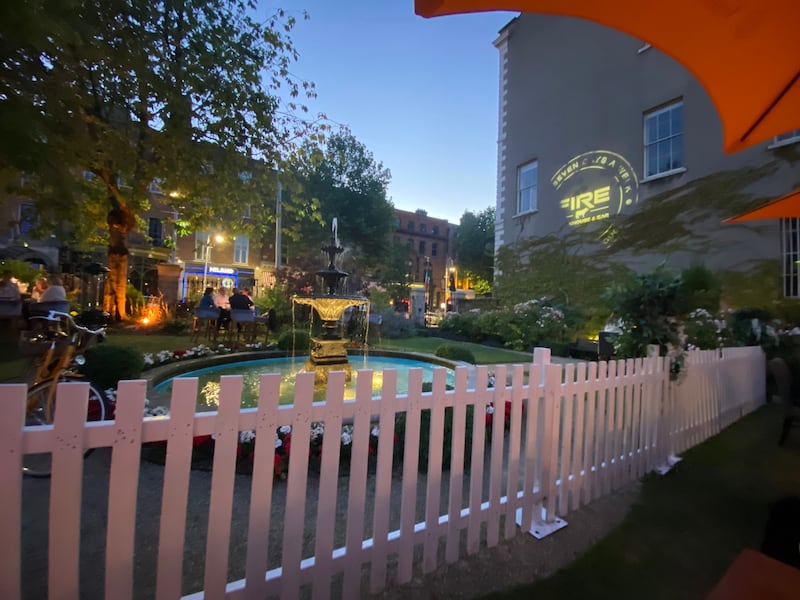
For a trip whose theme is rediscovering the city, New Perspectives is the appropriately titled temporary exhibition at the National Gallery, featuring Acquisitions 2011-2020. Fortified by a flat white from Le Beret outside, I could have happily spent hours exploring the gallery’s treasures. Happily this time, so could my youngest. The last time we were here, with friends visiting from New Zealand, her mood after 15 minutes was illustrated by Domenichino’s long-suffering St Mary Magadalene, and after 30 by Painted Shield with Head of Medusa. This time, she engaged, likening Borgianni’s St John the Baptist in the Wilderness to the mockumentary style of The Office.
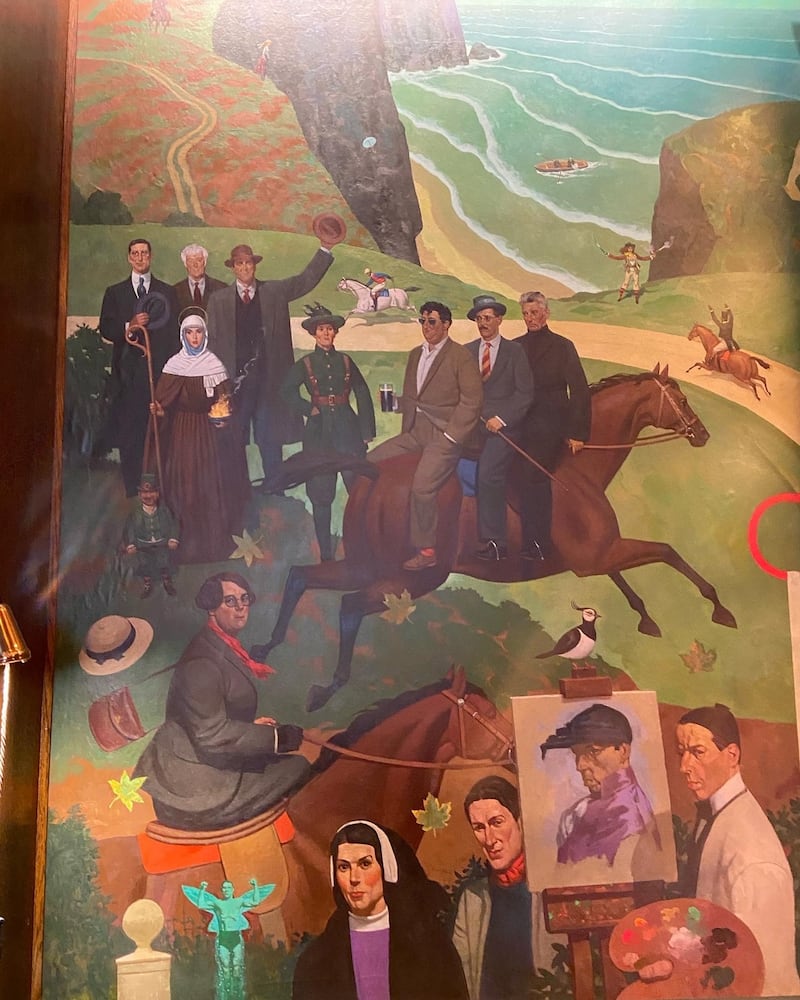
I loved the photography of Don McCullin, Evelyn Hofer, Dorothea Lange, Lee Miller and Fr Browne, a sculpture of Garry Hynes, new portraits of Graham Norton and John Rocha. William Leech’s A Convent Garden, Brittany is exquisite. It adorns the cover of Lines of Vision: Irish Writers on Art, which I recommend to give you a deeper appreciation of the work on display.
It is said of cities that you cannot step outside the door without spending money, but Dublin, like many capitals, is rich in national treasures that are free to enjoy. So if you add the cost of afternoon tea at the Shelbourne and a visit to the National Gallery, or a round of pre-dinner cocktails on the Champagne Terrace and a trip to the National Museum of Ireland, Archaeology, and divide by two, it doesn’t seem so extravagant.
The trick with museums, I think, is to skim them like a newspaper, not read them like a book. If axeheads turn your heart to flint, keep walking. I was captivated by two boats: one large, one small. The Broighter Boat is exquisite, a miniature vessel 18cm long complete with oars, rudder and mast, part of a gold hoard unearthed by ploughmen in Co Derry in 1896, celebrated in a 2013 poem by Michael Longley dedicated to Marie Heaney. The Lurgan canoe, by contrast, is 45ft long by 3ft wide, carved from a giant oak trunk more than 4,000 years ago and discovered in a Galway bog in 1901.
The Faddan More Psalter, or book of psalms, found as recently as 2006 in a Tipperary bog, can be viewed only in dim light to preserve it, which serves to enhance the sense of the sacred. Similarly, the secular icon that is the first ever copy of James Joyce’s Ulysses can be venerated in the inner sanctum of MoLI, the Museum of Literature Ireland, which is located in University College Dublin’s Newman House across the Green and opened on Culture Night in September 2019. It is a stylish space that celebrates our literary tradition. Its beautiful garden, which includes the tree where Joyce posed for his graduation photo, is an ideal place to have lunch. As a connoisseur of the toasted sandwich – I once declared in Grogan’s, after a friend had won a big book prize: “I would like to propose a toastie!” – I can highly recommend the Commons variety.
MoLI’s garden connects to another hidden gem, the Iveagh Gardens, via a gate adorned with a quotation by another UCD writer, Maeve Binchy, from Circle of Friends: “It was peaceful there and unfamiliar. Not like almost every other square inch of Dublin.”
Joyce, of course, has his own statue out front on the Green itself: “Crossing Stephen’s, that is, my green.” It is one of several recruited by our entertaining Green Mile tour guide, Eamon from the Little Museum, to tell the history of Stephen’s Green, which was gifted to the city by Lord Ardilaun, the great-grandson of Arthur Guinness, founder of the brewery.
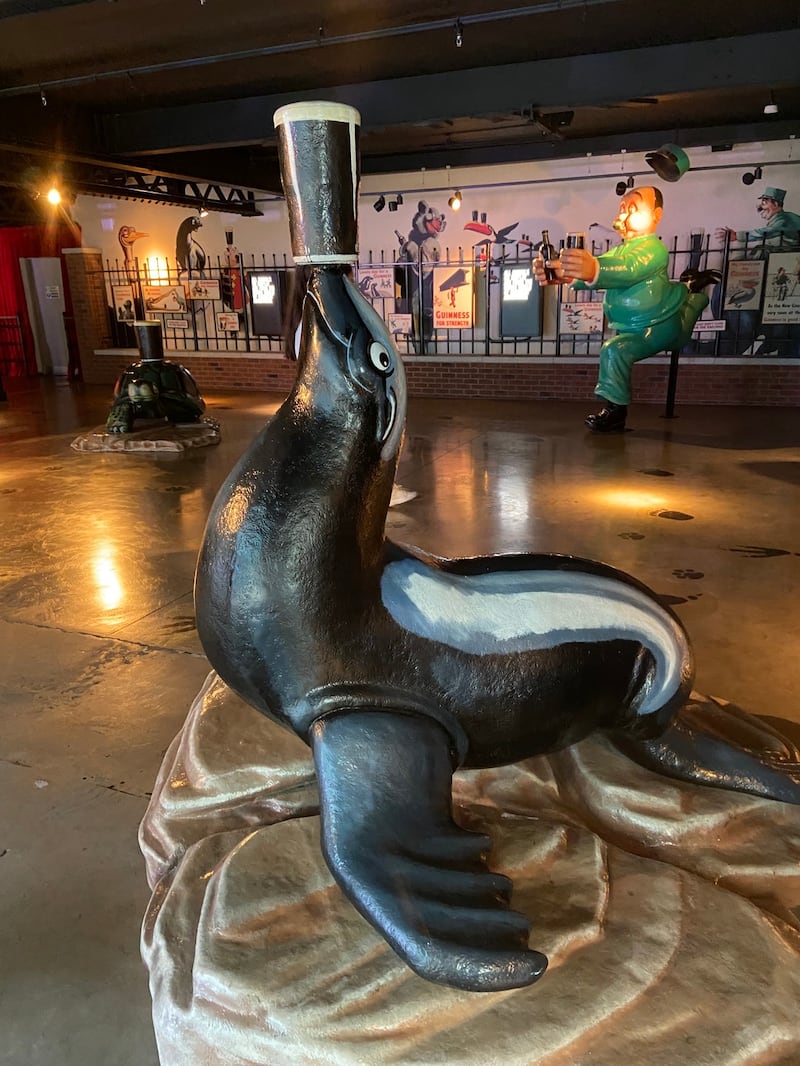
The Guinness Storehouse is our last official port of call. I was sure I’d been before – it opened in 2000 – but it turns out I am so OG/old that my last visit was to its predecessor, the Hop Store. The highlight of the tour, which is probably what makes it Ireland’s No 1 tourist attraction, is a pint in the Gravity Bar with its genuinely impressive 360-degree view over the city. Did you know there is a 4ft statue of St Patrick atop the green copper dome of Roe’s distillery nearby? The evolution of the brand’s advertising is fascinating, as is the industrial history, such as how a former Cambridge maths lecturer Michael Ash devised a mix of CO2 and nitrogen to create the perfect draught Guinness, replacing the old high-low cask method. Learning that its main ingredient, water, comes from the Wicklow mountains, not the iffy Liffey, was also pleasing.
As we decide on lunch before heading home, the USP of the nearest pub to the brewery, Harkins – that Brendan Behan drank there the night before he died – seems double-edged, so we choose a takeaway from Boojum, which we enjoy on a bench by the Grand Canal. Across the road is Keshk Cafe, which my eldest has been recommending since she ate there recently. On the way, we pass Hang Dai on Camden Street, a great Chinese restaurant I’ve been praising since I ate there with my brother and his friends. It’s a lovely feeling to see the city through each other’s eyes again.
Martin Doyle was a guest of Fáilte Ireland, whose 'Keep Discovering' campaign is encouraging Irish people to experience the joy of discovering the many hidden gems that Ireland has to offer. If you need inspiration on where to go and what to do, visit discoverireland.ie












